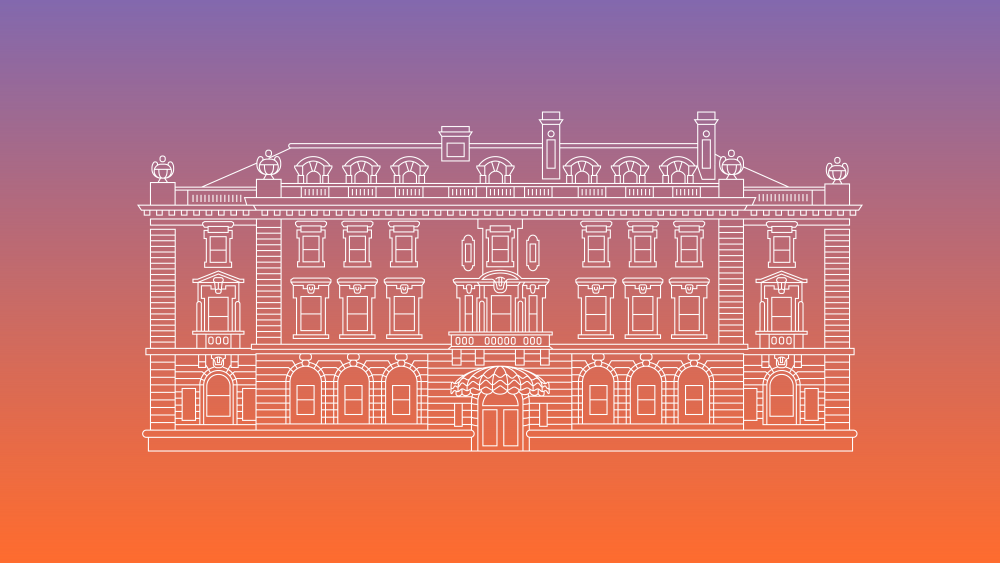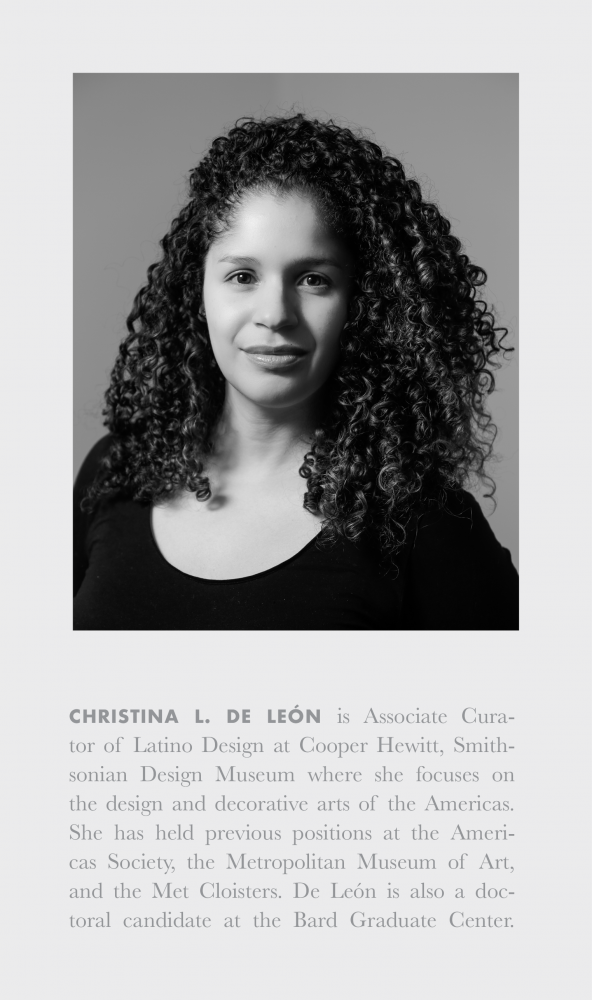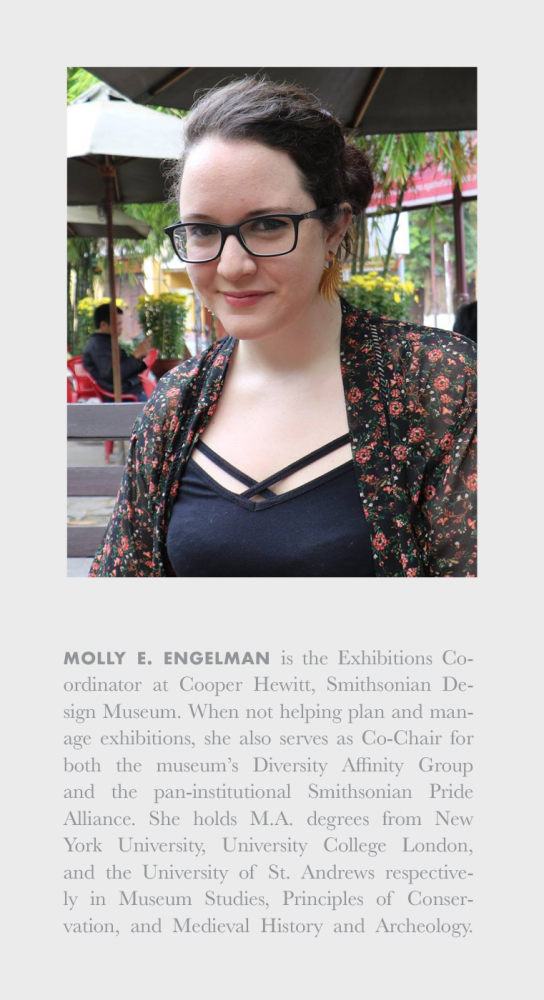Interviews & Reviews Issue 5 2021
Curator Conversation: The Diversity Affinity Group at Cooper Hewitt
Andrea Lacalamita

Illustration of the Andrew Carnegie Mansion. Ann Sunwoo, n.d. Courtesy of Cooper Hewitt, Smithsonian Design Museum
Cooper Hewitt’s Diversity Affinity Group (DAG) was formed three years ago, but I attended my first meeting with the group in June 2020—approximately one month following the death of George Floyd. My involvement with the group was motivated by recent events, and the desire to engage more actively with diversity on an institutional level. My participation in the group was, oddly enough, enabled by the fact that the pandemic had forced everything online; when Cooper Hewitt closed its doors to the public in March 2020, the Diversity Affinity Group began holding their monthly “Town Hall” meetings on Microsoft Teams. This new digital format, combined with a renewed and wide-spread interest in the subject of diversity amongst Cooper Hewitt staff, led to a sharp and sustained increase in the group’s regular members across all departments and levels. In February 2021, I spoke with the group’s co-chairs, Christina L. De León and Molly Engelman, to better understand the group’s history, goals, and vision for a more diverse future.
This interview has been lightly edited and condensed for clarity.
Andrea Lacalamita: Thanks so much to you both for speaking with me today. To start, can you tell me who you are, what your role within the group is, and at a basic level, what the Diversity Affinity Group is?
Christina L. De León: Sure. The group started as a task force in 2017. I wasn’t involved at the time. It was being spearheaded by somebody else at Cooper Hewitt who’s actually no longer with the museum. They’d had a meeting or two, and when the group leader left the museum, I was asked to take it up again with a colleague from Education. We began to think about the ways we could bring more diversity to Cooper Hewitt. The goals of the group evolved to become a little different from what they were originally. We were very much centered around how we could bring diversity to Cooper Hewitt from an outward-facing perspective—so, how could we bring in more diverse guests, how could we create more diverse content, how could we reach diverse communities, so on and so forth.

But once Molly joined the group, which was about two years ago now, we began to rethink the group. This was also a period of time in which the museum was embarking on a five-year strategic plan in which one of the goals was diversifying the communities we serve. And this wound up being a big priority for us because we truly didn’t understand who our communities were. Cooper Hewitt had a lot of work to do in that respect.
The goal for this group in particular became: How can we serve as a resource for staff members so they can be supported, not only around diversity, but also in terms of employee rights, performance plans, and other issues that come up for employees of museums and cultural institutions?
Molly had the really great idea of reframing the group as an employee resource group. We tried to get away from the idea of being a task force, because a lot of the work that needed to be done at the museum was something that we couldn’t do without the support of Senior Management. It was really a systemic change that needed to happen. We are there to support it, and to bring certain issues to light, but we primarily serve as advocates for the staff and for their issues. We do the best we can to push those issues forward with senior leadership.
 Molly E. Engelman: The group is currently structured as having two co-chairs—Christina and myself—and a general volunteer membership base. However, we are in the process of undergoing a chartering process, which will lend a more formalized structure to the group’s leadership, including the addition of several new roles and responsibilities, which we’re currently outlining. The majority of DEAI [Diversity, Equity, Accessibility, and Inclusion] initiatives across different Smithsonian units use more of a traditional task force model, where people are assigned roles on a committee. That’s actually how this group started. It was supposed to have a representative from every department, but we wanted to step away from that model in an effort to create more unilateral engagement.
Molly E. Engelman: The group is currently structured as having two co-chairs—Christina and myself—and a general volunteer membership base. However, we are in the process of undergoing a chartering process, which will lend a more formalized structure to the group’s leadership, including the addition of several new roles and responsibilities, which we’re currently outlining. The majority of DEAI [Diversity, Equity, Accessibility, and Inclusion] initiatives across different Smithsonian units use more of a traditional task force model, where people are assigned roles on a committee. That’s actually how this group started. It was supposed to have a representative from every department, but we wanted to step away from that model in an effort to create more unilateral engagement.
CLDL: Thank you, Molly, for making that distinction between other Smithsonian units, who in some cases, also have to come up with deliverables or solutions. They are solution-driven task forces, whereas our group isn’t necessarily put in a position where we have to deliver a step-by-step blueprint on how to make certain changes.
MEE: Yes, and I will say the group has undergone a lot of growth over the last two years to become what we are today, which is more of a group that advocates on behalf of the larger staff. That’s something that we’ve tried to lean into, based on current socio-economic and political ongoings in our professional and global communities.
AL: I’m curious to know more about that. Would you say that recent events like the Black Lives Matter protests and the pandemic have changed, or added fuel to, the Diversity Affinity Group’s work?
MEE: I think it’s definitely changed the work. Shortly after those issues came to the forefront in the media, we started seeing a lot more participation in our group. We went from having maybe fifteen to twenty regular members to almost 70 to 80 members (or close to 90% of our staff). Around the same time, Christina and I connected with another colleague, who was Cooper Hewitt’s Accessibility Manager at the time, to develop an action plan in response to a call for action from the larger Smithsonian on policies and programming that could address what they were calling the “dual pandemic” of racism and COVID-19.
There was a big push internally within the Smithsonian and Cooper Hewitt for those actions to be very outward-facing, and to focus on how we could support our external communities. But no one was looking at how this dual pandemic was affecting our staff, or museum staff across the industry, at a time when there was a significant number of layoffs and a significant amount of pain. So, we were motivated to put an action plan together, and use the leverage we had as co-chairs of the DAG to put these issues in front of our senior leadership. That action plan has since helped to shape the goals and endeavors of the group and defined how we want to move forward together.
CLDL: When we were asked by the Smithsonian to think about external programming, I think it became an important prompt to consider really big internal structural issues that needed to be addressed. So, for instance, a good example would be internship programming. We asked ourselves: How can we get more diverse students to take advantage of our internship programs, and are those internship programs structured in a way that is equitable? Do we provide enough money in the stipend for a student who cannot afford to not work—to sustain themselves through the summer, or have enough funds for school books for the next semester, or whatever other need they might have?
What we realized was that, no, we didn’t. We needed to review so many parts of the internal museum system that were not serving us as an institution, nor the public. This list of internal issues that we made ended up becoming a galvanizing force for the group. I think Molly can attest to all the people who wrote to us about things they felt the museum could be doing better, or that they believed the museum should make a priority—very wide-reaching things that spanned from permanent collections and public programming to the contractors and vendors we engage with.
MEE: We took these ideas and actions we were hearing about from staff at various levels within the institution and put them into an action plan that we thought could actually be implemented by Cooper Hewitt.
AL: So, rather than focussing all of your efforts on external communities and initiatives, you began to more actively engage with Cooper Hewitt’s internal community. I’m wondering if this inward-facing approach is tied to the ideas of emotional labor and curatorial care, which apply not only to objects and artworks, but also to the museum community.
MEE: I won’t say that the entire action plan is focused completely inwardly, but I do think that the actions that were focused internally were centered on that idea of care and the responsibility of leadership and senior management in contributing to that care.
CLDL: During this period of time when museums are getting a lot of criticism and being asked to step up, they are also being very much criticized for the superficiality of their efforts. One of the things we’ve tried to do with this inward-facing work is to say, if we really want to create change within our institution, and provide certain types of resources for our public, we have a lot of learning to do. There are a lot of deep-rooted institutional changes that need to take place.
I think everyone at Cooper Hewitt wants to be active, but they don’t know how to be. They don’t know the first step. Sometimes, they don’t even know what language is appropriate, or what steps can be taken within their own department that would feel effective or appropriate. A lot of this work has been as simple as asking: Have you had these types of discussions within your departments? Have you talked about diversity, equity, and inclusion with regard to the type of work you’re doing? What are some of the challenges you face on a departmental level that you’d like to see addressed?
Previously, there was a lot of pressure to be forward-facing, without necessarily taking the time for internal reflection. And what we have tried to do is encourage everyone to take the time to reflect.
MEE: And unfortunately, I think that’s true across the industry. The work that a lot of museums have been doing over the last few years to be more inclusive of their communities and stakeholders might be well-intentioned, but without that reciprocal internal response and that inward respect and equity, it comes off as purely performative.
AL: How has the experience of co-chairing this group affected your daily work?
MEE: I’m lucky to have the support of my supervisor in the work that I do, both with the Diversity Affinity Group and with the Smithsonian Pride Alliance. The Diversity Affinity Group has been part of my official work plan since I started at the organization. I think having that structure from the start has allowed me to advocate that this work be considered a fundamental part of my own workload, but also to advocate that these values be represented in work plans across the institution.
CLDL: I’ll say that it’s a lot of work! I don’t think I could co-chair this group without the support of Molly and others who have really pushed me to think about things differently and move conversations forward.
I’m the only curator at Cooper Hewitt that’s focused on a specific cultural group, so there are a lot of hurdles that I face every single day. These issues that have been coming up around diversity, equity, and inclusion—that’s my everyday job. This experience hasn’t changed the way I do my job, but I think it has perhaps provided a bit of insight for some of my colleagues in terms of some of the challenges I face, or ways in which perhaps they can go about their work differently. It has been an incredibly humbling experience to see people have that realization, and to have a very open dialogue with them.
But we’re also very much in the beginning stages of this work. From a curatorial perspective, we’re working on 100-plus years of collection-building that has not considered diversity of any kind. Even though I think everyone at the museum, and certainly every one of the curatorial staff, thinks this work is important, having the skills or feeling empowered to do that work in an effective way—without having the fear of getting it wrong—is something completely different. That takes time to build.
I believe that the museum as a whole has tried to make this a priority. We recently had a group called the Culture Society come lead a series of training sessions with us. It was a really good start. But I think the important part is that the museum recognizes that was just a first step.
MEE: I will say that a lot of the DEAI work that the group is currently doing is being done in response to a previous absence within the museum. Traditionally, within the museum sector, this work might have been sparked from the top down, but what we’ve really seen happen here is that these initiatives are truly being driven by staff feedback and suggestions. And, in many cases, [they] have been led and organized by more junior staff. One thing I’ve really valued over the last year has been the opportunity to share the work of the group across the larger Smithsonian. Working with colleagues across the institution has allowed us to see what has succeeded for some units and failed for others. Serving as advocates for this kind of work is time consuming but so valuable.
AL: Do you see the structure of this group transforming over time? How so?
MEE: I think things will, and should, change, but I hope the group never departs from being a forum and a platform for conversation. Something we highlighted within the group’s charter was that it was always meant to be a pipeline for staff to communicate general concerns about diversity, equity, inclusion, and accessibility, and to hold the institution accountable for representing the beliefs and values of its staff.
CLDL: I will also say that museums are an ecosystem. They are not the work of one person, ever. They’re not even the vision of one person. So, while I hope a lot of the work that we do will be implemented, and that some of the issues we’re championing now will no longer be issues, the museum is always going to be in a position in which it will need to grow, change, and adapt. And that work is only going to happen with the staff. When the staff isn’t fully integrated into that type of work, we face a lot of problems.
With this group we’re trying to create an atmosphere of transparency, community, and collaboration so that we don’t have to start from scratch or reinvent the wheel all the time. It’s not as if we don’t know how to do any of this work—we do know how to do it. We’re just getting better and stronger and more capable of taking it on. That is what I hope will be the legacy of this group. That it will continue to take shape and change and adapt, as necessary.
is a licensed architect (MArch, OAA) and received her MA in the History of Design and Curatorial Studies from Parsons School of Design in 2021. Her graduating project was a curatorial capstone with the Product Design and Decorative Arts department at Cooper Hewitt, Smithsonian Design Museum for the upcoming exhibition, Hector Guimard: How Paris Got Its Curves.
